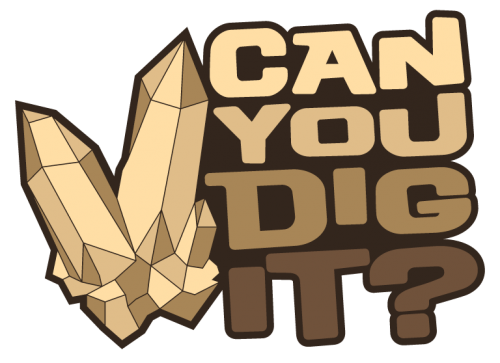Editors note: A complete list of activities follows this release
 GAINESVILLE, Fla. — Florida Museum of Natural History visitors will have the opportunity to explore Earth’s geology and landscape through fully immersive activities such as an augmented reality sandbox, model volcano eruptions and more during the 12th annual “Can You Dig It?” event March 17 from 10 a.m. to 3 p.m.
GAINESVILLE, Fla. — Florida Museum of Natural History visitors will have the opportunity to explore Earth’s geology and landscape through fully immersive activities such as an augmented reality sandbox, model volcano eruptions and more during the 12th annual “Can You Dig It?” event March 17 from 10 a.m. to 3 p.m.
This free, fun-for-all-ages geology event is designed for anyone curious about the world in which we live. The interactive activities and demonstrations provide visitors with a new understanding of Earth’s environment and the role its processes and materials play in our lives.
“People can expect a fun-filled day stuffed with hands-on activities about rocks, gems, minerals and even fossils,” said Florida Museum educator Chelsea Collison.
Activities this year include a “make your own earthquake simulator,” a fossil dig and screen wash, as well as a geologic time tunnel.
In addition to the erupting-volcano demonstrations, other popular activities include an oil spill and cleanup where visitors can investigate how chemistry is used to clean up environmental catastrophes. Participants can pick up a “passport” and receive stamps at each station, redeemable for a prize at the end of the program.
“I just hope that visitors have fun and become a little more aware of the incredible range of issues that geoscientists work to understand and inform on,” said program coordinator Matt Smith, a senior lecturer and undergraduate adviser in the University of Florida department of geological sciences.
Food from High Springs Orchard and Bakery will be available for purchase.
“Can You Dig It?” is presented by the UF department of geological sciences and the Florida Museum of Natural History in collaboration with the Gainesville Gem and Mineral Society. It is sponsored by Creative Environmental Solutions and EAM2 Services.
For more information, visit www.floridamuseum.ufl.edu/event/can-you-dig-it or call 352-273-2062.
-30-
Writer: Jessica Finkel, PRintern@flmnh.ufl.edu, 352-273-2032
Sources: Chelsea Collison, ccollison@flmnh.ufl.edu, 352-273-2062; Matt Smith, mcsmith@ufl.edu, 352-392-1554
Media contact: Paul Ramey, pramey@flmnh.ufl.edu, 352-273-2054
Can You Dig It? Activities List
10 a.m.-3 p.m.
March 17, 2018
Florida Museum of Natural History
3215 Hull Road, Powell Hall on the UF campus
Activities occur throughout the day unless noted
Augmented Reality Sandbox: Understanding topographic maps
This sandbox combines real sand with virtual reality to show how 2-D topographic maps show the 3-D shape of the land. Make your own surface in the sandbox and watch as the virtual reality projection mirrors your model. Then, make it rain in the sandbox and see how virtual water flows in your model.
Deep Ocean Drilling
Discover how scientists study the bottom of the ocean and sample your own “drill core” from our tasty ocean floor model.
Fossil Dig
Sift for fossils alongside Florida Museum paleontologists.
Fossil Screen Wash
Sift sand for microfossils using screens and water.
Gainesville Gem and Mineral Society: Experience Rocks and Minerals
Explore rocks and minerals through touch, experiments and games.
Gainesville Gem and Mineral Society: Hobbies that Rock
Find out how hobbies such as rockhounding and lapidary (engraving, cutting or polishing gems) can be fun for the whole family.
Geologic Time Tunnel
Explore the “Tunnel of Time.” Take a journey back through time and explore our planet’s geologic history.
Investigating Ocean Acidification
The Earth is a big interconnected system. Discover how increased carbon dioxide in the atmosphere can threaten the ocean’s coral reefs.
Make Your Own Earthquake
Learn about how, why and where earthquakes happen, and then make your own earthquake to find out how you measure on the Richter scale.
Oil Spill and Cleanup
Investigate how chemistry is used to clean up these environmental catastrophes.
Paleobiology and Fossils
See fossils of amazing prehistoric life forms and explore Florida’s fossil heritage.
Paleomagnetism
Rocks contain their own compasses, and they don’t always point north. See how scientists use Earth’s magnetism to reconstruct how the continents have moved through time.
Passport Prizes
Grab a passport and collect stamps as you explore then receive a prize for your completed passport.
The Power of Water: How the Land Gets its Shape
Use wave tanks and other interactive models to explore water’s power in shaping our ever-changing environment.
The Rock Cycle
Discover how rocks are continuously recycled on Earth into new rocks and learn about the different environments in which they form.
Secrets of Sand
Take an up-close look under a microscope to see the secrets of sand revealed.
Tools of a Geologist
Learn why geologists are the real “Inspector Gadgets” and bring your minerals and rocks to be identified.
UF Department of Geological Sciences
Learn about the UF geological sciences department, how to become a geologist and why geoscience is an excellent career choice.
Volcanoes (periodic eruptions scheduled on the hour and half-hour starting at 10:30 a.m. until 2:30 p.m.)
Participate in ongoing interactive demonstrations and investigate why some volcanoes erupt explosively while others often do not, but watch out – ours is ready to blow.
-###-